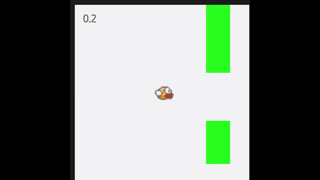Playing Flappy Bird using Evolution Strategies
After reading Evolution Strategies as a Scalable Alternative to Reinforcement Learning, I wanted to experiment something using Evolution Strategies, and Flappy Bird has always been one of my favorites when it comes to Game experiments. A simple yet challenging game.
The model learns to play very well after ~1500 iterations, but not completely flawless and it usually loses in difficult cases (high difference between two wall entrances). Training process is pretty fast as there is no backpropagation, and is not very costy in terms of memory as there is no need to record actions as in policy gradients.
Here is a demonstration of the model after ~1500 iterations (less than an hour of training):
also see: Before training
For each frame the bird stays alive, +1 score is given to him. For each wall he passes, +10 score is given.
Try it yourself
First, install dependencies:
pip install -r requirements
The pretrained parameters are in a file named load.npy and will be loaded when you run train.py or demo.py.
train.py will train the model, saving the parameters to saves/<TIMESTAMP>/save-<ITERATION>.
demo.py shows the game in a GTK window so you can see how the AI actually plays (like the GIF above).
play.py if you feel like playing the game yourself, space: jump, once lost, press enter to play again. 😁
pro tip: reach 100 score and you will become THUG FOR LIFE 🚬
Notes
It seems training for too long reduces the performance after a while, learning rate decay might help with that.
To try it yourself, there is a long.npy file, rename it to load.npy (backup load.npy before doing so) and run demo.py,
you will see the bird failing more often than not. long.py was trained for ~2000 more iterations than load.npy.
